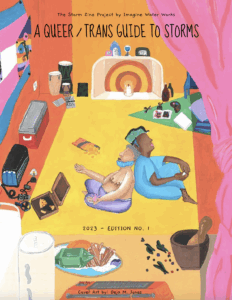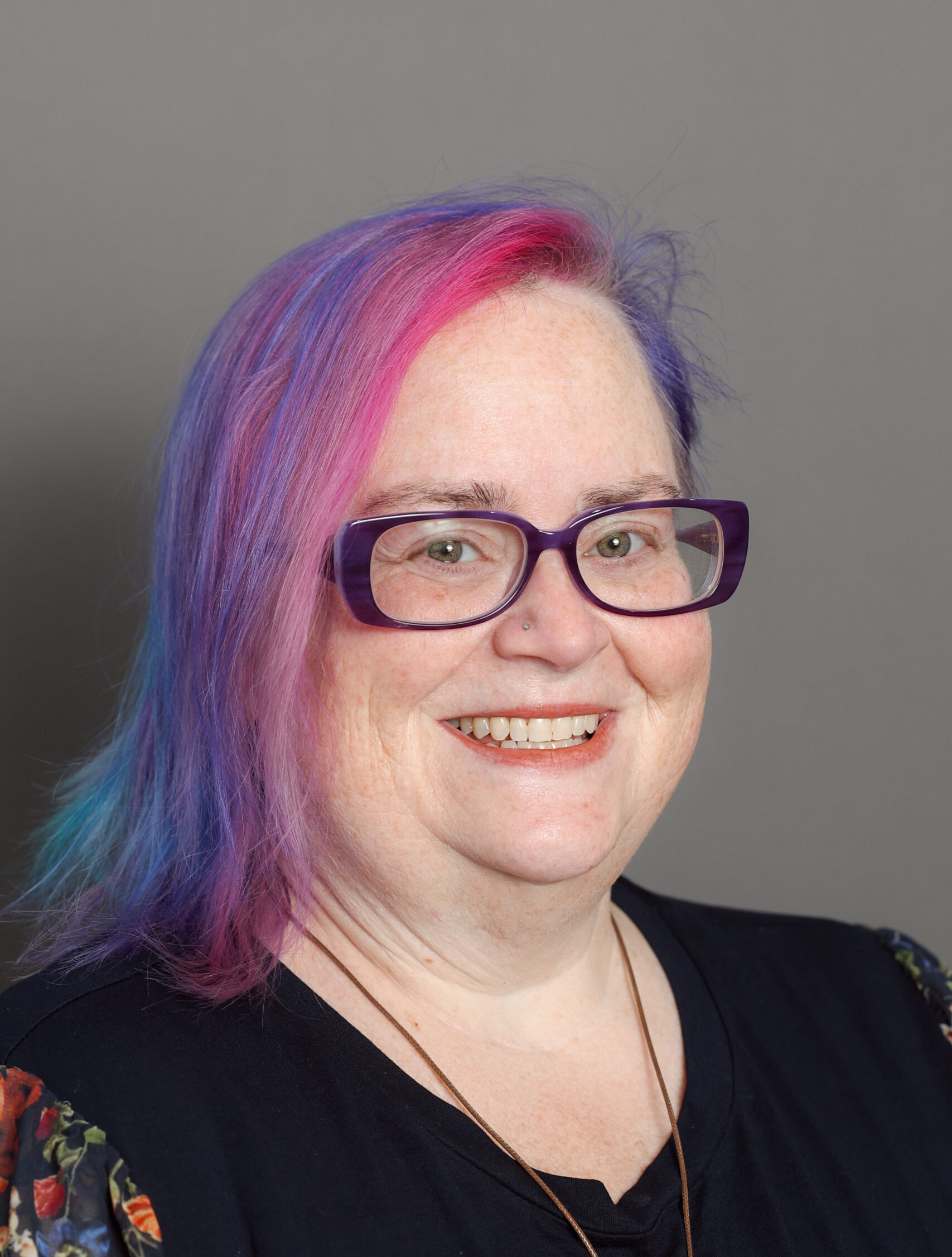Imagining disaster guides that meet the needs of LGBTQIA+ communities

As the 2025 hurricane season starts, numerous organizations release hurricane preparedness guides. As funders, it’s helpful for us to think beyond traditional guides and recognize the unique needs some populations in our communities may face. June marks not only the beginning of hurricane season but also Pride month. As such, I’m sharing one of my favorite guides created to support LGBTQIA+ communities, of which I am a proud member as a queer, non-binary person.
In August 2023, I was pleased to join friends and other donors at The Imagination Farm, Imagine Water Works’ (IWW) physical space and organizing hub in New Orleans, to launch the newest version of the guide, which has come a long way since it was dreamed up as a Google doc providing New Orleans LGBTQIA+ transplants with advice on preparing for a hurricane. I remember seeing the Google sheet in 2017 and thinking how useful and special it was then. As a living document, it is constantly revised to improve its accuracy and reach. This year, it has been expanded with pieces from a Puerto Rican artist and translated into Spanish.

The “Storm Zine Project: Queer/Trans Guide to Storms,” produced by IWW, is a beautiful, illustrated 64-page color zine, created entirely by LGBTQIA+ residents of Southeast Louisiana who had previously prepared for a storm or flood.
The creators say, “This zine is a love letter to so many at once. To our home, where we were born and raised, and the land and water that grounds us always. To our queer and trans community, who have proven over and over again that we know how to build a better future for ourselves and the world around us, even and especially when the future feels uncertain. To ourselves. To you.”
So, what makes it unique?
It offers authentic appeal as a guide created by and for the LGBTQIA+ community. It also encourages engagement, which may be enhanced by using a zine format instead of the usual text-heavy report. It’s full of art, poetry, beautifully illustrated images and straightforward advice.
The guide includes advice that many other resources exclude. For example, trans folks are advised to gather not just identification, but also name-change documentation, receipts from surgeries and legal paperwork. Storms can create gender dysphoria by forcing members of the trans community to hide who they are, or by not having the necessary tools and supplies to maintain their gender identity. Folks are therefore reminded to gather gender-affirming clothing, wax kits, clippers, wigs and other items that help them feel their whole selves.
CDP has supported some of IWW’s other unique projects. During the COVID-19 pandemic, IWW’s co-founder Klie Kliebert created the Trans Clipper project, which helped match trans individuals with hair clippers, so they could maintain their hair to match their gender. In 2021 and 2022, CDP awarded grants to IWW to support the Trans Clipper Project and a trauma-informed survival guide: 2020 COVID-19 Queer and Trans Guide to Hurricanes.
What else is different for the LGBTQIA+ community during disasters?
Members of the LGBTQIA+ community may need medical necessities not always required by cisgender, heterosexual communities, such as hormone replacement therapy and extra syringes/needles, PrEP, antiretrovirals and other medications.
Many LGBTQIA+ community members may also have been distanced from their family of origin by force, choice or circumstance. The guide suggests creating a “Hurricane Team” full of friends and families of choice, either locally or those with a spare room in several directions, in case the storm location changes. Who can you count on to take you in?
It also suggests building relationships with your neighbors, which is beneficial for everyone, not just the Trans or Queer community, although it may be harder if you are not sure how you will be perceived. The guide suggests going with a friend to meet your neighbors if you don’t already know them.
Is this the only community affected by disasters in unique ways?
Of course not! Several communities could benefit from a unique disaster guide. As funders build relationships with diverse and marginalized communities, they will learn about the needs and gaps where targeted support could be beneficial.
For example, the NAACP released “In the Eye of the Storm: A People’s Guide to Transforming Crisis & Advancing Equity in the Disaster Continuum” to help support Black communities’ needs in all disaster phases. And, noting that research shows people with disabilities are 4.5 times more likely to die during disasters, IWW is set to release the next iteration of their Storm Zine Project, by and for disabled individuals, in 2026.
There are universal guidelines and recommendations for disaster preparedness. However, as we recognize and acknowledge specific needs and concerns for diverse communities, we can better provide support to ensure each community can prepare for and withstand a disaster, thereby leading to improved recovery options.
